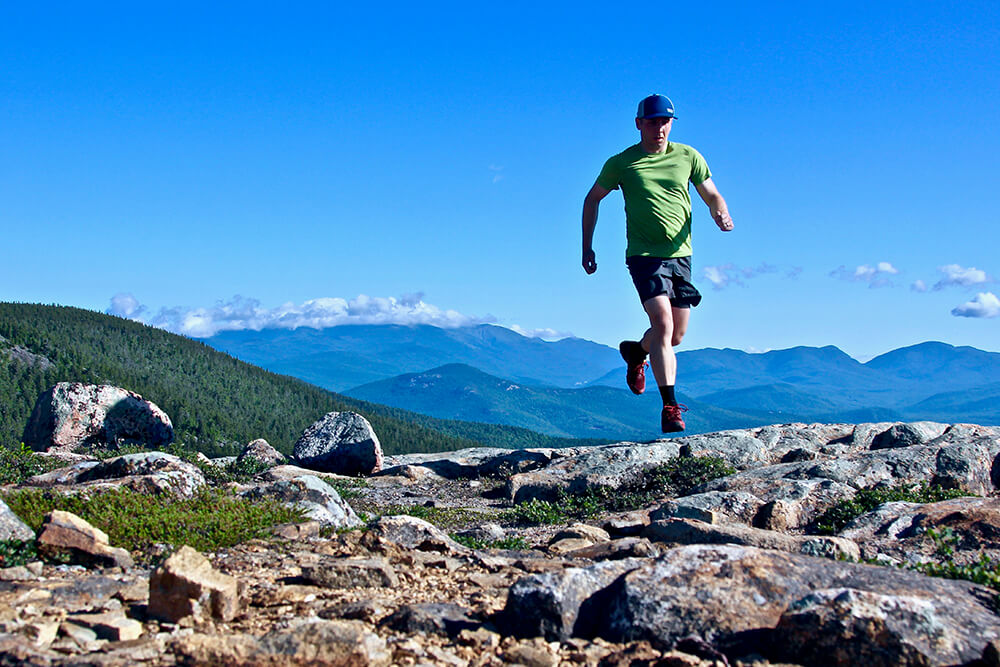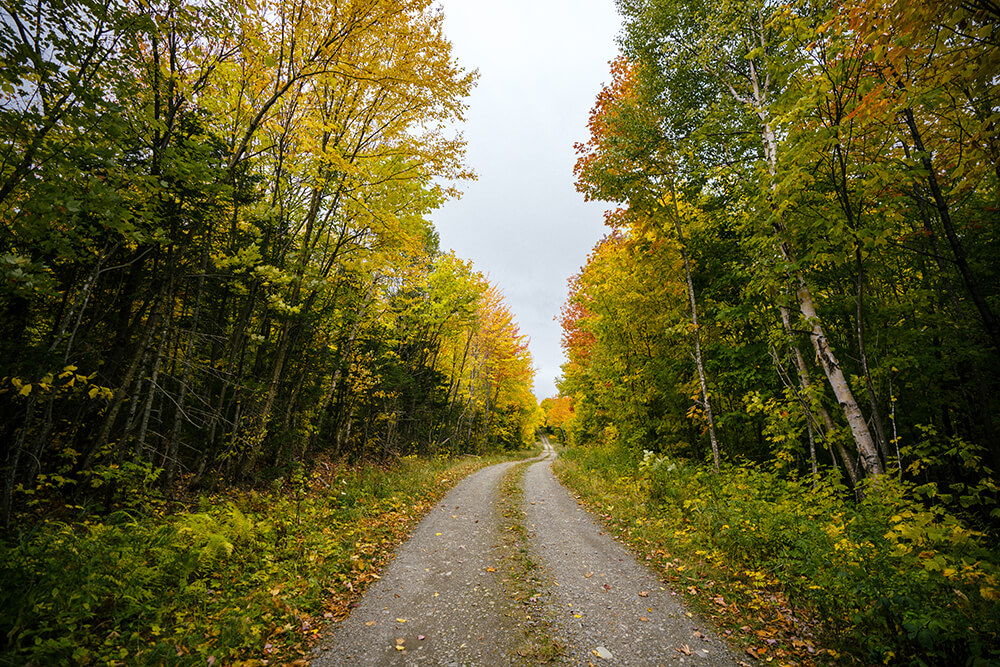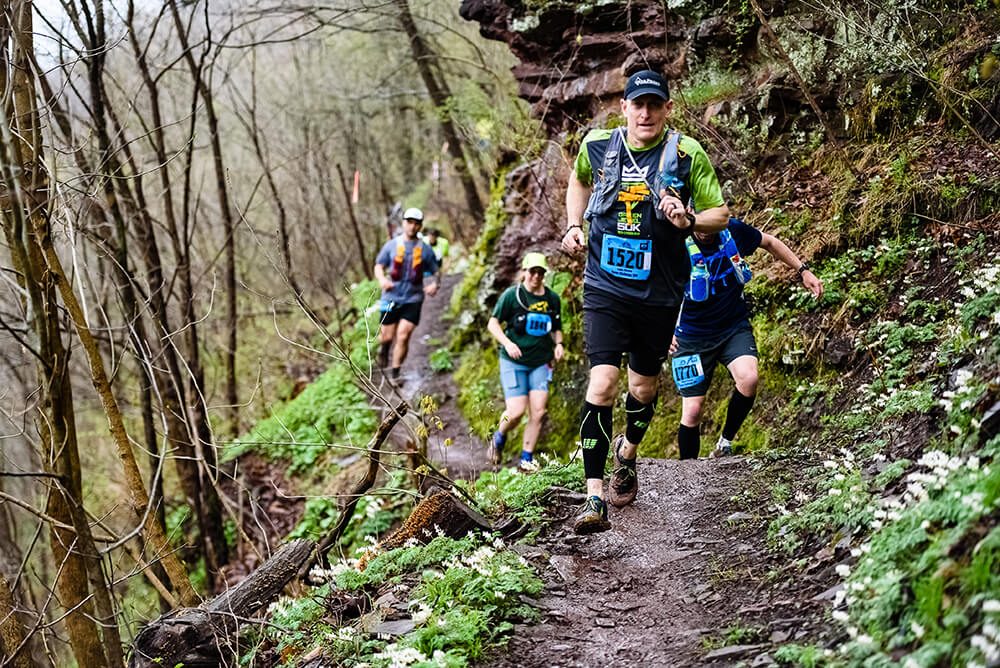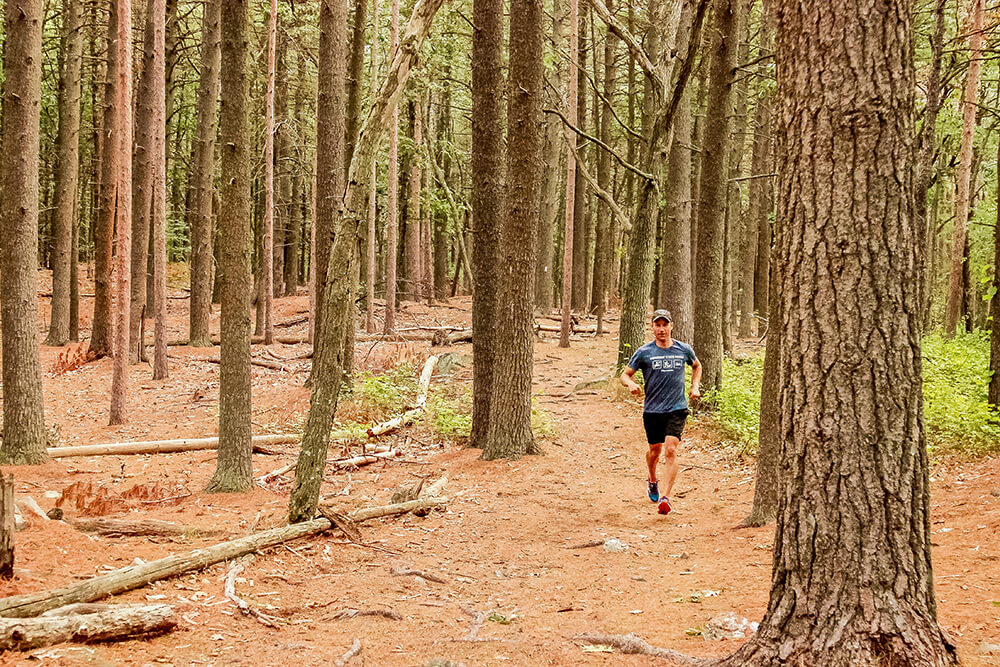

The Moat Range in New Hampshire’s White Mountain National Forest may be a trail running route to which to aspire. For beginners, pick a route closer to home.
Trail running has experienced a boom in recent years. According to the American Trail Running Association, the number of Americans who tried trail running doubled between 2007 and 2017 to 3 million. Participation in ultramarathons—defined as any race longer than 26.2 miles, and usually on trails—has increased 1,676 percent in the past quarter-century to more than 600,000 runners, according to a report from RunRepeat and the international Association of Ultrarunners. By most accounts, COVID-19 only increased the interest in trail running, with more of us seeking the solitude of a quiet run through a town forest rather than along a busy sidewalk or pursuing a fastest known time (FKT) along a stretch of trail in lieu of a road race.
Maybe you long to join the throngs of trail runners but have been hesitant to trade in the blacktop for rocks, roots, and single-track. The good news is that trail running resources, gear, and clubs have never been more plentiful, making now a great time to explore the sport. Here are a few basics to get you started.


Shaw Mountain Trail in the Maine Woods is the kind of wide, forgiving terrain that’s perfect for dipping your toe into trail running.
Start Simply
A trail run is any run not on concrete or tarmac. That could be a relaxed trot along a wide, dirt carriage path, a treacherous run to the summit of a 4,000 footer, or anything in between. If you’re new to trail running, start with a more accessible route along a gravel rail trail or through a town forest with wide, non-technical trails—a 2- or 3-mile loop, perhaps—to get a feel for running on an uneven surface. Pick a trail you can easily navigate and that can be completed using equipment you already own, including road running shoes. Be sure to carry any water or snacks you’ll need along the way, but stick to routes at the start that won’t require you to pack navigation equipment, extra layers, or other essentials needed for a longer journey.


Whether training or racing, the right gear can keep you safer and more comfortable on the trail.
Gearing Up
Once you’ve been on a couple short, local trail runs, you may have the bug to try a longer or more technical route. This progression may require investment in a few additional items that you don’t already own.
Shoes: Trail running shoes feature more durable outsoles—the hard, usually rubber surface that makes contact with the ground—than road-running shoes. For rockier, more technical terrain, find a shoe with tacky grip and a rock plate, which helps soften the blow when you step on harder sticks and stones. For soft or muddy trails, a shoe with 4- or 5-inch lugs on the soles is optimal for maintaining traction. Running longer than 10 miles? Look for a trail shoe with more cushioning in the midsole to protect your feet as you go. Add a pair of lightweight gaiters to keep scree and debris (or snow and ice in the winter) out of your shoes.
Vest: A lightweight running vest can carry your water (often in two collapsible soft flasks), nutrition, extra layers, and phone on runs of any length—and items like a map, first-aid kit, headlamp, and firestarter for much longer outings in the backcountry. Vests hold your belongings tight to your back and chest, distributing their weight and minimizing bounce.
Poles: Routes with significant ascents and descents may merit use of a pair of trekking poles. While they may prove useful on the uphills, don’t underestimate their importance on the descent to save your knees and steady you from falling.
Safety
Follow basic hiking safety whenever running on trails. Carry the Ten Essential pieces of gear on all but the shortest and flattest trail runs. Plan your route carefully, taking into account that you’ll be moving faster and more susceptible to missing trail markers. Also remember that minutes or hours out on the trail are a better metric in trail running than miles, given elevation gain and loss, technical terrain, and obstacles like rivers or streams. Consider the weather and don’t be afraid to turn around should a storm arrive or daylight fade. Always tell someone back at home where you’ll be running and when you expect to be off the trail, but consider going with a buddy for longer or more remote trail runs. If you’re going with a group, divide up essential safety gear and extra layers between the runners and find out who is trained in certain backcountry skills, like wilderness first-aid. If you do a lot of backcountry running, get trained in wilderness first-aid! (Sign up for the next AMC wilderness first-aid training.)
Performance triad: Eat, sleep, and hydration: Calculate and monitor your nutrition, hydration, and rest needs before, during and after your run—especially when venturing out for a longer duration activity. Be mindful of the ways in which a faster or slower pace can factor into this equation. Ignoring your performance triad can multiply challenges in the backcountry. When you don’t successfully maintain the inputs to balance your exertion, the first impact is to the cerebral cortex, the outermost area of the brain that houses the centers for judgement and decision-making. This can make you more susceptible to making mistakes or missing warnings while you’re on the trail.


Practice the trail running basics on flatter, more forgiving terrain—like many of those within the Middlesex Fells Reservation in Massachusetts.
How to Trail Run
Slow and steady—especially when running on trails for the first time—wins the race, or in this case finishes the trail run. Take short, deliberate strides, looking out for roots, rocks, and puddles. Pump your arms on the uphills. Walking or power-hiking uphills is common practice in trail running. Use caution when running downhill; slow your pace, shorten your stride, land on your toes, and lean slightly back into the mountain to reduce your chances of falling. (Spoiler: You will fall eventually, so be sure you have a first-aid kit to treat any bumps and scrapes.)
You’re also likely sharing the trail with hikers and sometimes mountain bikers. If you approach hikers from behind, announce yourself when you first see them to give them enough time to step off the trail briefly. General etiquette suggests allowing descending parties to pass, which may mean stepping off the trail yourself.
Finally, soak up and appreciate the beauty. This isn’t a sidewalk, nor a treadmill—you’re likely on a mountain or in a forest or another wild space. This means you should certainly leave no trace of your running there—leave flora and fauna as you found them—but it’s also an opportunity to seek beauty as you go. The eastern United States features many wonderful locations to get off the roads and onto a beach, bog, field, or even above tree line. The trail running community is friendly, supportive, and ready to welcome newcomers with a smile. See you out on the trail!